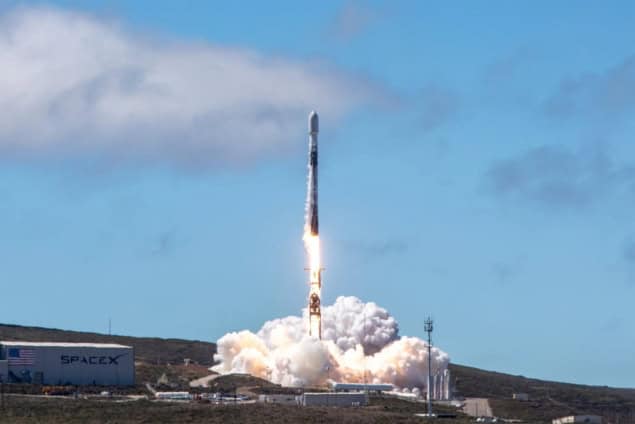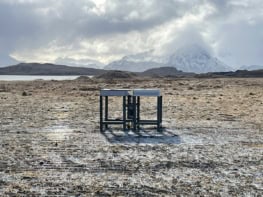
NASA has successfully launched a mission to explore the interactions between the Sun’s and Earth’s magnetic fields. The Tandem Reconnection and Cusp Electrodynamics Reconnaissance Satellites (TRACERS) craft was sent into low-Earth orbit on 23 July from Vandenberg Space Force Base in California by a SpaceX Falcon 9 rocket. Following a month of calibration, the twin-satellite mission is expected to operate for a year.
The spacecraft will observe particles and electromagnetic fields in the Earth’s northern magnetic “cusp region”, which encircles the North Pole where the Earth’s magnetic field lines curve down toward Earth.
This unique vantage point allows researchers to study how magnetic reconnection — when field lines connect and explosively reconfigure — affects the space environment. Such observations will help researchers understand how processes change over both space and time.
The two satellites will collect data from over 3000 cusp crossings during the one-year mission with the information being used to understand space-weather phenomena that can disrupt satellite operations, communications and power grids on Earth.
Each nearly identical octagonal satellite – weighing less than 200 kg each – features six instruments including magnetomers, electric-field instruments and devices to measure the energy of ions and electrons in plasma around the spacecraft.
It will operate in a Sun-synchronous orbit about 590 km above ground with the satellites following one behind the other in close separation, passing through regions of space at least 10 seconds apart.
“TRACERS is an exciting mission,” says Stephen Fuselier from the Southwest Research Institute in Texas, who is the mission’s deputy principal investigator. “The data from that single pass through the cusp were amazing. We can’t wait to get the data from thousands of cusp passes.”



